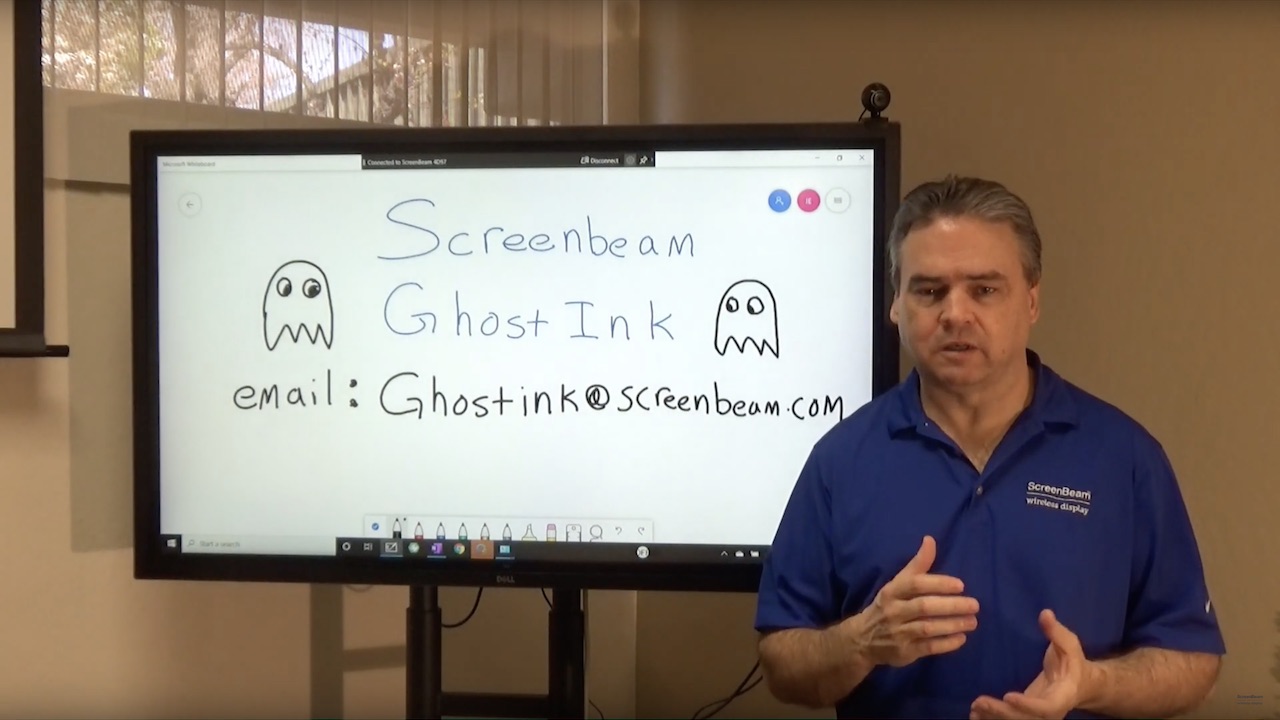ScreenBeam Adds Ghost Inking for Low-Latency Annotation

The What: ScreenBeam has announced its latest technology solution called Ghost Inking. Previewed at Integrated Systems Europe, Ghost Inking is designed to drastically improve the Windows annotation experience on a wireless connected interactive display using a Windows PC.
[ScreenBeam Adds Support for Google Classroom and Chromebooks]
The What Else: With ScreenBeam’s Ghost Inking technology, users have a more natural “pen and paper” experience that fosters better collaboration. As soon as the user begins to annotate on the display, Ghost Inking technology backfills the user’s finger or pen ahead of the actual permanent digital ink marking. No matter how fast or slow the user moves, the Ghost Ink stays with the finger or pen, filling in the gap between movement and actual inking. Now the user and those in the room can focus on the information being shared without distraction or interruption.
By extending Windows Ink native in Windows 10 and Microsoft Office 365 ecosystems onto ScreenBeam-connected interactive displays, companies eliminate the challenge of training employees on proprietary inking tools built into displays. For example, most organizations do not equip every meeting space with the same display. Since many organizations already deploy Microsoft Office 365, users are proficient and the tools are common and shared within teams. Standardizing on productivity tools boosts team efficiency while reducing training time.
“As organizations continue to lean on wireless solutions to create collaborative and flexible meeting spaces and classrooms, what often arises is a tension between a desire for a wireless environment with the grounded nature of a ‘connected’ experience,” said Mike Ehlenberger, ScreenBeam general manager. “ScreenBeam Ghost Inking fixed the inherent latency in wireless inking to take writing and drawing to the next level. Users get a better than wired natural writing experience as Ghost Inking technology responds instantly. The outcome is a true pen-to-paper feel, enabling the human eye-hand experience to be totally natural. Ghost Inking technology further demonstrates our commitment to enabling unified productivity in meeting and learning spaces.”
The Bottom Line: ScreenBeam with Ghost Inking technology is designed to enable cohesive collaboration experiences to be extended to meeting and classroom spaces to help unify group productivity and leave more room for work and creativity. Ghost Inking will be a new feature available in the ScreenBeam 1100 in early Q2.
A daily selection of features, industry news, and analysis for AV/IT professionals. Sign up below.
The AVNetwork staff are storytellers focused on the professional audiovisual and technology industry. Their mission is to keep readers up-to-date on the latest AV/IT industry and product news, emerging trends, and inspiring installations.
